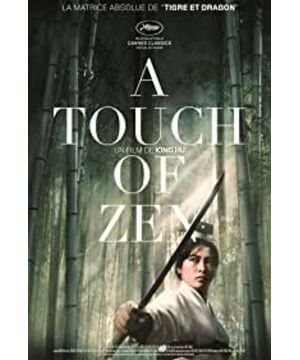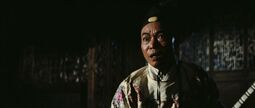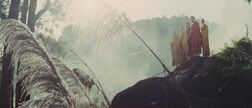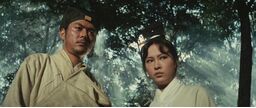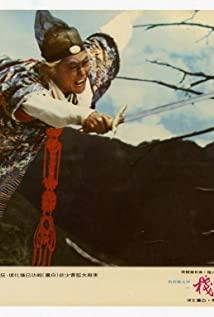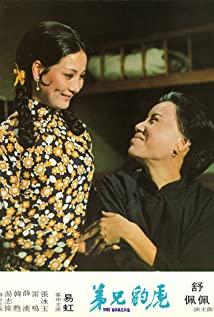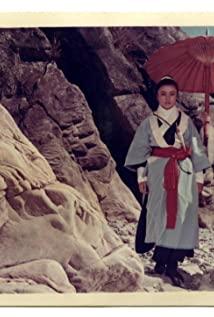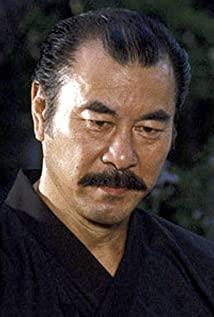The film begins to show suspense everywhere, such as the handling of the characters appearing one by one, Gu Shengzhai, Ouyang Nian, Shimenqiao, the fortune teller, and the chivalrous girl Yang are all blurred and unpredictable, allowing the viewer to follow the mysterious characters of the characters. resulting in great curiosity. In addition, the abandoned Tunpu where Miss Yang lived was also depicted with multiple angles of empty mirrors to depict the gloomy and desolate environment, and when Gu Xingzhai first entered the Tunpu at night, the atmosphere of the plot was created to be ghostly, suspenseful, and creepy. This is all due to the meticulous art design, the clever use of suspense lens aesthetics, and the smooth editing.
But the brilliance is more than that. The use of precise editing to create multiple immortal martial arts scenes is the essence of the film. For example, in the "Battle of Bamboo Forest", in which the chivalrous girl cooperates with Shimen Qiaofei's bamboo tree, and then uses her strength to rebound and bend down to kill the enemy. The beautiful continuous picture of economics can be said to have created an immortal classic scene. In addition to a number of realistic and intense martial arts movements, the film also handles the atmosphere of the environment so that the dynamic beauty and the natural landscape are juxtaposed into a picture full of poetic "dancing" pictures. In addition, the design of martial arts movements is also very precise, realistic and natural. Whether it is close combat or using spring bounces to turn over, there is no twist or deliberateness at all. This also shows that the film is very particular about the dynamics in martial arts as an aesthetic. Performance. And more than 30 years later, "Crouching Tiger, Hidden Dragon", "House of Flying Daggers", etc., have they also borrowed the artistic conception in the "Battle of Bamboo Forest" play of "Chivalrous Girl"?
In fact, what really shocked me the most in the film was the use of montage and poetic editing at the end to fill the sky with crows, the wounded Master Huiyuan stood on the top of the mountain and bathed in the sun, and the wicked Xu Xianchun lost his sense of seeing the reaction in his eyes. White pictures, inverted line pictures with metaphors separated by earth red and white, shots that convert the original pictures into minimalist patterns, etc. These are all presented in the final stage with repeated back-and-forth connection or jump-connected shots. Through the cut and juxtaposed image images of Zen Taoism and Buddhism, it alludes to the importance of all beings reaching the heavens and the earth and realizing the method of life and death. This is also under the film's excellent martial arts theme, which expands the depth of life.
View more about A Touch of Zen reviews


